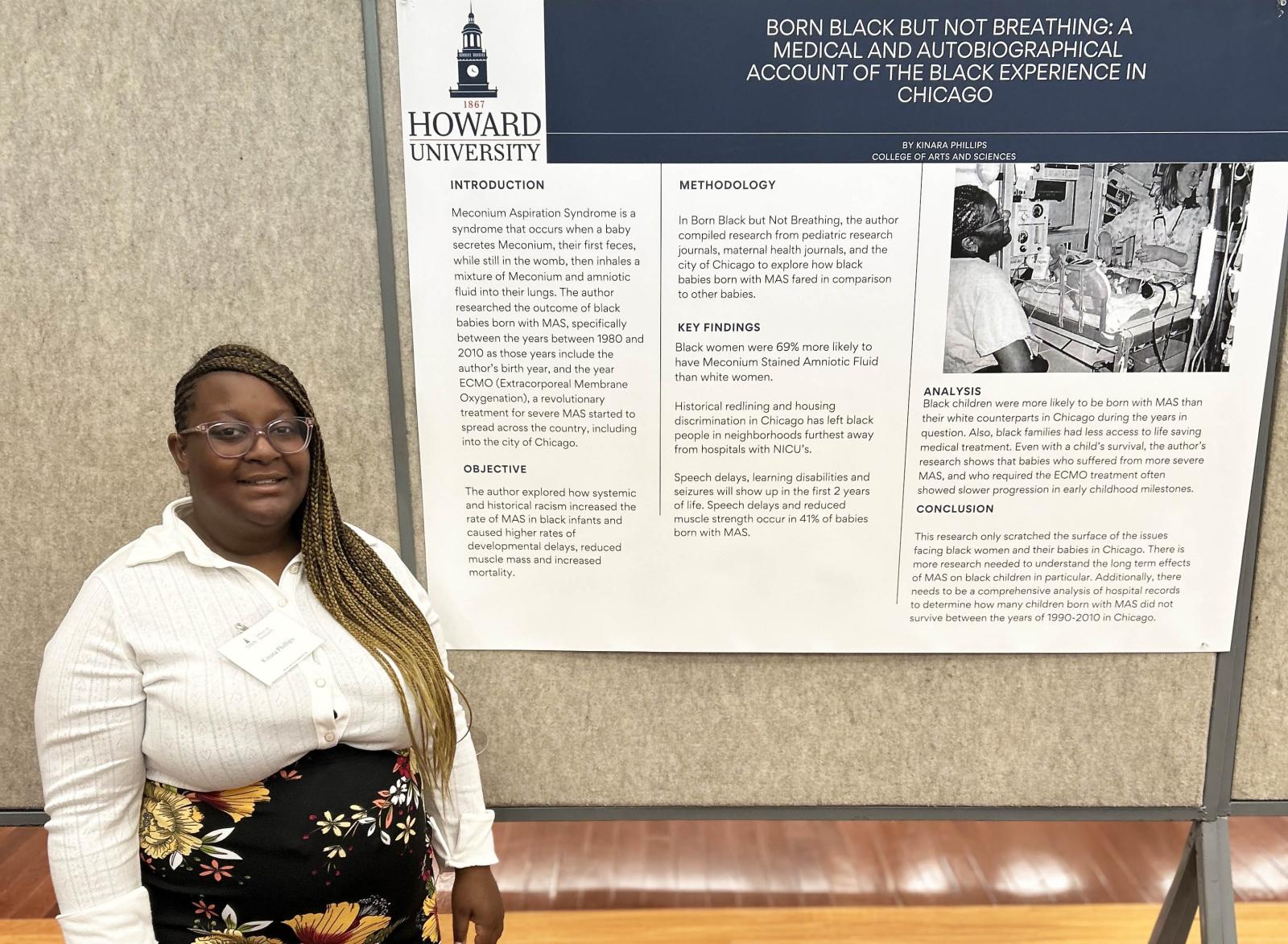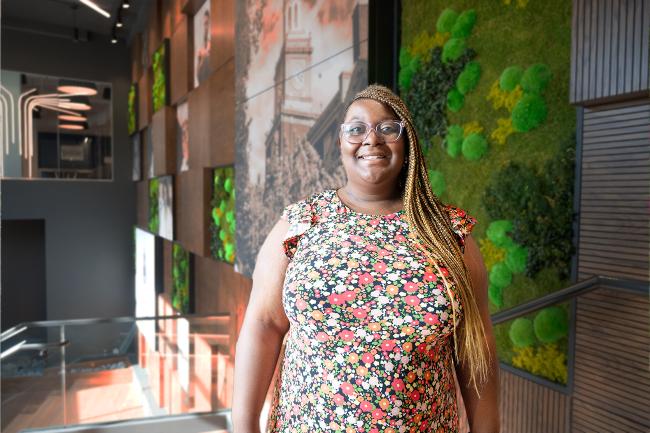When asked why it was important for her to bring awareness to the disparities in how Black babies born in Chicago with meconium aspiration syndrome (MAS) fared in comparison to other babies born with the syndrome, senior African American studies major Kinara Phillips pointed to the picture included with her presentation and said, “Because I’ve had it; that’s my mom and that’s me.”
Born in 2002 with the condition that occurs when a baby secretes meconium (their first feces) while in the womb, then inhales it and amniotic fluid into their lungs — which in severe cases can lead to a total shutdown of the lungs — Phillips chose to focus her research on Black babies born with MAS between 1980 and 2010. The main treatment for MAS, extracorporeal membrane oxygenation, was developed in the late 1970s and eventually became readily available throughout the country and in Chicago — but only for some people.
“The treatment was invented right before 1980; it started appearing in hospitals by the early 90s. That started to change the outcome for a lot of children, but not necessarily for Black children,” Phillips explained, going on to note that during that time (and in many instances still today) hospitals with neonatal intensive care units were not in Black neighborhoods, not to mention the high cost of the treatment — and the fact that programs like Medicare and the Affordable Care Act were not yet in existence. “Before that, you don’t have those programs,” said Phillips. “Where are parents who are making less than $60,000 a year going to find the money for a $100,000 dollar procedure? They’re not.”

The graduating senior explored how conditions like systemic and historical racism — including redlining and housing discrimination in Chicago, which often placed this community far from hospitals with adequate equipment and treatment — as well as economic disparities contributed to an increase in the rate of MAS in Black infants. The syndrome in turn causes higher rates of developmental delays, reduced muscle mass, and increased mortality.
Her research found that Black women were 69% more likely to have meconium-stained amniotic fluid than white women, which means more Black babies born with a syndrome that can ultimately be deadly, though records pertaining to their prognosis don’t exist. “There isn’t really any research specifically on the survival rates of Black babies with MAS then,” said Phillips referring to the time period of her study. “I wish I could tell you the percent of Black babies who survived and who didn’t, but the information doesn’t exist.”
Acknowledging that the treatment and experience of Black patients while in hospitals is a real issue, Phillips was “more focused on how systemic and historical racism ends up impacting the likelihood of Black babies surviving — simply based on the economic situations of their parents and where hospitals are located in the city.” She continued, “I was surprised by how few real hospitals there were on the Southside of Chicago.” Looking at a map, she could count less than 10 such facilities with more than 500 beds on the Southside, while on the Northside, that number more than doubled. “There’s just about the same amount of people on the Southside as there are on the Northside. It’s just that the majority of the people on the Southside are Black.”
I’d like to see a more comprehensive understanding of how redlining and the racial wealth gap is actually harming our health.”
While it was important for Phillips to shed light on disparities within medicine and treatment for the Black community, especially its children, she doesn’t want to go into medicine, instead planning to become a lawyer. “I chose law to make sure that kids in dire situations are properly taken care of,” she said. That said, she would like to see more research in this area. “I’d like to see a more comprehensive understanding of how redlining and the racial wealth gap is actually harming our health.”
In addition, she suggests leaning into community-based healthcare options to combat the disparities, as well as making alternatives to Western medicine more readily available — again emphasizing its cost prohibitive nature and the fact that “a lot of Black people don’t trust it.”
“If there was one: more access to medicine and medical institutions, and two: access to alternatives to those medical institutions, I think more people would go to the doctor; more people would be treated by doctors who know what they’re doing,” said the Phillips. “Having Black doctors treat Black patients makes a huge difference in the lives of Black patients.”




